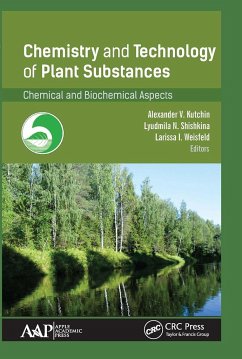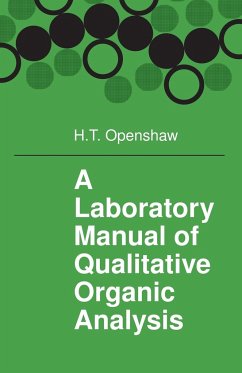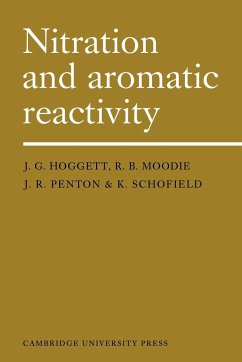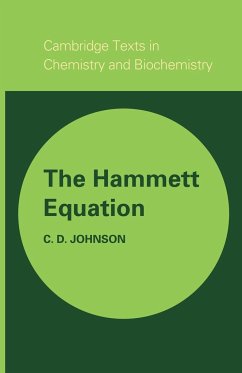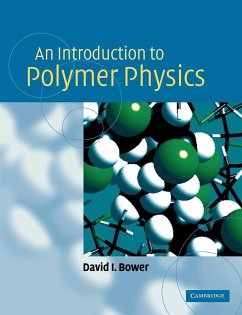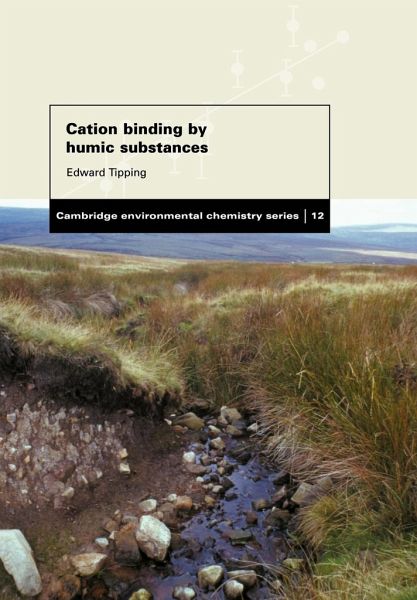
Cation Binding by Humic Substances
Versandkostenfrei!
Versandfertig in 1-2 Wochen
100,99 €
inkl. MwSt.
Weitere Ausgaben:

PAYBACK Punkte
50 °P sammeln!
Description, modelling and interpretation of important environmental interactions for environmental scientists, ecologists and geochemists.Humic substances are highly-abundant organic compounds formed in soils and sediments by the decay of dead plants, microbes and animals. This book focuses on the important binding properties of these compounds which regulate the chemical reactivity and bioavailability of hydrogen and metal ions in the natural environment. Topics covered include the physico-chemical properties of humic matter and interactions of protons and metal cations with weak acids and m...
Description, modelling and interpretation of important environmental interactions for environmental scientists, ecologists and geochemists.
Humic substances are highly-abundant organic compounds formed in soils and sediments by the decay of dead plants, microbes and animals. This book focuses on the important binding properties of these compounds which regulate the chemical reactivity and bioavailability of hydrogen and metal ions in the natural environment. Topics covered include the physico-chemical properties of humic matter and interactions of protons and metal cations with weak acids and macromolecules. Experimental laboratory methods are also discussed, together with mathematical modelling. Finally the author looks at how the results of this research can be used to interpret environmental phenomena in soils, waters and sediments. This comprehensive account of cation binding by humic matter is a valuable resource for advanced undergraduate and graduate students, environmental scientists, ecologists and geochemists.
Table of content:
1. Introduction; 2. Humic substances - a brief review; 3. Environmental solution and surface chemistry; 4. Proton dissociation from weak acids; 5. Metal-ligand interactions; 6. Methods for measuring cation binding by humic substances; 7. Quantitative results with isolated humic substances; 8. Cation binding sites in humic substances; 9. Parameterised models of cation-humic interactions; 10. Applications of comprehensive parameterised models; 11. Predictive modelling; 12. Cation-humic binding and other physico-chemical processes; 13. Cation binding by humic substances in natural waters; 14. Cation binding by humic substances in soils and sediments; 15. Research needs.
Humic substances are highly-abundant organic compounds formed in soils and sediments by the decay of dead plants, microbes and animals. This book focuses on the important binding properties of these compounds which regulate the chemical reactivity and bioavailability of hydrogen and metal ions in the natural environment. Topics covered include the physico-chemical properties of humic matter and interactions of protons and metal cations with weak acids and macromolecules. Experimental laboratory methods are also discussed, together with mathematical modelling. Finally the author looks at how the results of this research can be used to interpret environmental phenomena in soils, waters and sediments. This comprehensive account of cation binding by humic matter is a valuable resource for advanced undergraduate and graduate students, environmental scientists, ecologists and geochemists.
Table of content:
1. Introduction; 2. Humic substances - a brief review; 3. Environmental solution and surface chemistry; 4. Proton dissociation from weak acids; 5. Metal-ligand interactions; 6. Methods for measuring cation binding by humic substances; 7. Quantitative results with isolated humic substances; 8. Cation binding sites in humic substances; 9. Parameterised models of cation-humic interactions; 10. Applications of comprehensive parameterised models; 11. Predictive modelling; 12. Cation-humic binding and other physico-chemical processes; 13. Cation binding by humic substances in natural waters; 14. Cation binding by humic substances in soils and sediments; 15. Research needs.





